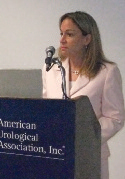The True Number Needed to Screen & Treat To Save A Life with PSA Testing
(This article is prepared for QUEST readers from a study published in the Journal of Clinical Oncology and introduces readers to a vocabulary important for interpreting recent numbers on prostate cancer screening and prostate cancer mortality.)
“If you don’t do PSA testing and you are one of those with potentially lethal disease, the consequences of not screening are very serious.” William J. Catalona, MD

The terms relate to how many men need to be screened (NNS) and how many men need to be treated (NNT) to prevent one prostate cancer death.
From 1994 to 2006, the era of PSA testing, death rates from prostate cancer in the US declined by an average of 4% per year, the most rapid decline for any cancer.
A well-publicized study, The European Randomized Study of Screening for Prostate Cancer (ERSPC) recently reported that PSA screening led to a 20% reduction in prostate cancer deaths and a 41% reduction in metastatic disease at diagnosis at 9 years.
However, serious concerns were raised because the original ERSPC report included estimates indicating that a large number of men (48) would have to be screened and treated to prevent one death from prostate cancer.
Unfortunately, the misleading numbers – reported and interpreted in the media – gave some men pause as to why they were having annual PSA tests as well as what treatment decisions they should make if they were diagnosed with prostate cancer. The problem is that these estimates were made at 9 years at which point the difference in mortality with screening was only just beginning.

When patient and screening followup data was used beyond 9 years (in the study being summarized here), the number of men to screen and treat to prevent one death decreased considerably from the ERSPC projections.
Another study (Goteborg CaP Screening Trial), including a subset of Swedish participants from the ERSPC, reported on 14 year follow-up.
The results showed follow-up time was everything.
One prostate cancer death was prevented for every 12 men treated and even more deaths would be prevented with longer follow-up.
In addition, treatment prevents many more men from having to undergo unpleasant treatments for advanced metastatic disease, who may suffer from CaP but die from another cause.
Because of the long natural history of prostate cancer progression, a follow-up time of more than 10 years is necessary to evaluate cancer- specific deaths.
In the setting of a survival study, quoting one set of numbers for NNS and NNT at a single time point may therefore be misleading.
With additional follow-up, for example in the ERSPC study, the mortality difference between those in the PSA screening group and non-screening group will likely continue to grow.
Because these numbers change over time, as the proverbial saying goes, you cannot compare apples to oranges and expect a reliable result.
Nine-year follow-up in NNT and NNS studies connected to prostate cancer mortality may be misleading by underestimating the benefits of screening seen with longer follow-up.
The data from follow-up beyond 10 years should encourage men to continue their annual PSA testing and to make treatment decisions accordingly.
(Based on material from: What is the True Number Needed to Screen and Treat to Save a Life with Prostate-Specific Antigen Testing? Journal of Clincal Oncology, February 1, 2011. Stacy Loeb, MD; Edward F. Vonesh, MD; E. Jeffrey Metter, MD; H. Ballentine Carter, MD; Peter H. Gann, MD; and William J. Catalona, MD











